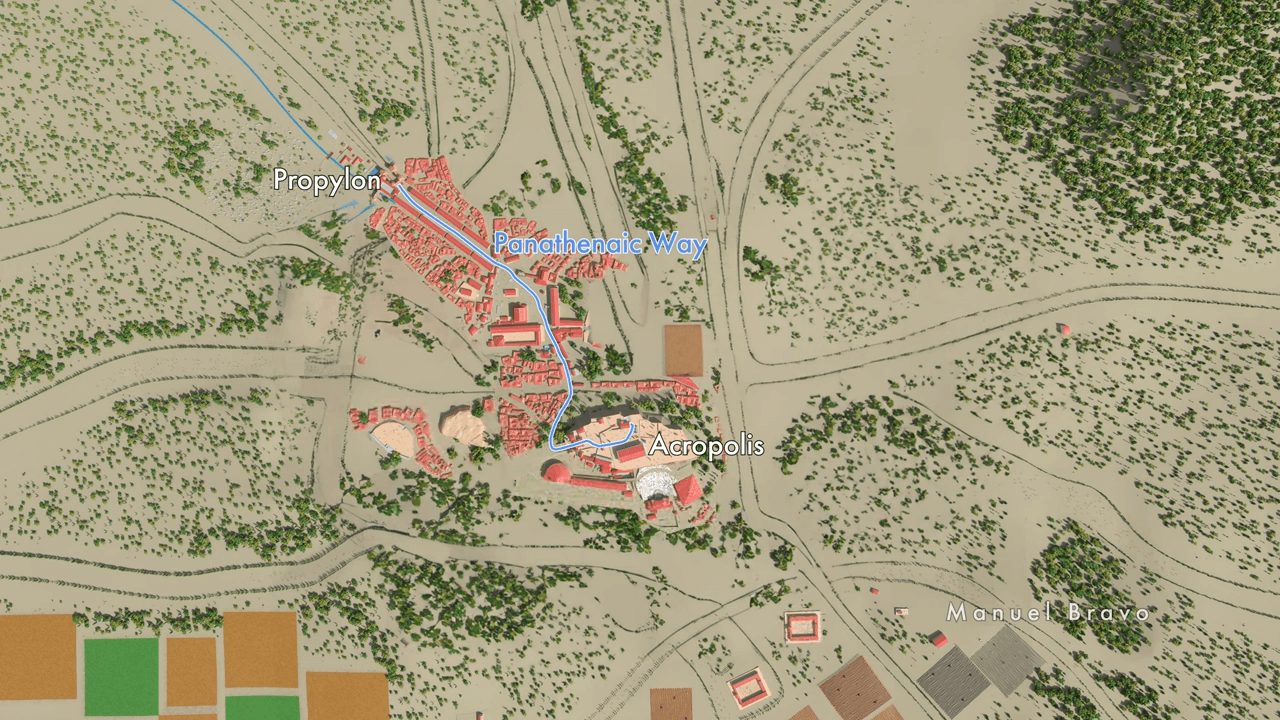Ancient Athens, with its rich cultural heritage, boasted several significant architectural and historical landmarks that continue to evoke curiosity and awe. The Panathenaic procession, a pivotal event in ancient Athens, was held annually, with a special celebration every four years at the Parthenon. The procession route, known as the Panathenaic Way, was an essential part of Athenian life, serving as a path of reverence and revelry and offering a glimpse into the city's vibrant history.
At the heart of ancient Athens lay the Agora, a bustling center of commerce, government, and culture. Public structures like the imposing Middle Stoa and the stately Stoa of Attalos encircled this sizable open space. It was here that revered philosophers like Socrates and Plato engaged in intellectual discourse and debate, leaving an indelible mark on ancient Greek philosophy and leading to the birth of the term 'stoicism'.
The Temple of Hephaistos, a remarkably well-preserved ancient Greek temple dedicated to Hephaistos and Athena, stands as a testament to the architectural prowess of the time. Constructed in the 5th century BC, this temple exemplifies the perfected Doric hexastyle form, with its sculpted frieze, imposing columns, and thirteen columns flanking each side, contributing to the grandeur of the Agora and Athens itself.
The transition of Athens from Greek to Roman influence during the Pax Romana brought about the construction of notable structures such as the Odeon and the Temple of Ares, along with the Roman Agora and the Tower of the Winds, which served as significant additions to the city's architectural landscape.
Ancient Athens boasted remarkable architectural and theatrical achievements, exemplified by the iconic Theater of Dionysus, considered the prototype of all Greek theaters, and the magnificent Panathenaic Stadium, rebuilt in 144 AD, which featured 50,000 white marble seats and was primarily used for athletic performances and foot races.
Furthermore, meticulous planning and attention to detail defined the architectural landscape of ancient Athens. The positioning and orientation of key buildings were carefully calculated to ensure optimal viewing angles and harmonious integration with the surrounding landscape, resulting in a unified and visually stunning composition.
Finally, the Pnyx, a central location for popular assemblies, played a pivotal role in the creation and sustenance of democracy. The rich and complex history of Athens, from classical Greek and Roman antiquity to the Byzantine Empire and beyond, serves as a testament to its diverse and enduring cultural legacy.










